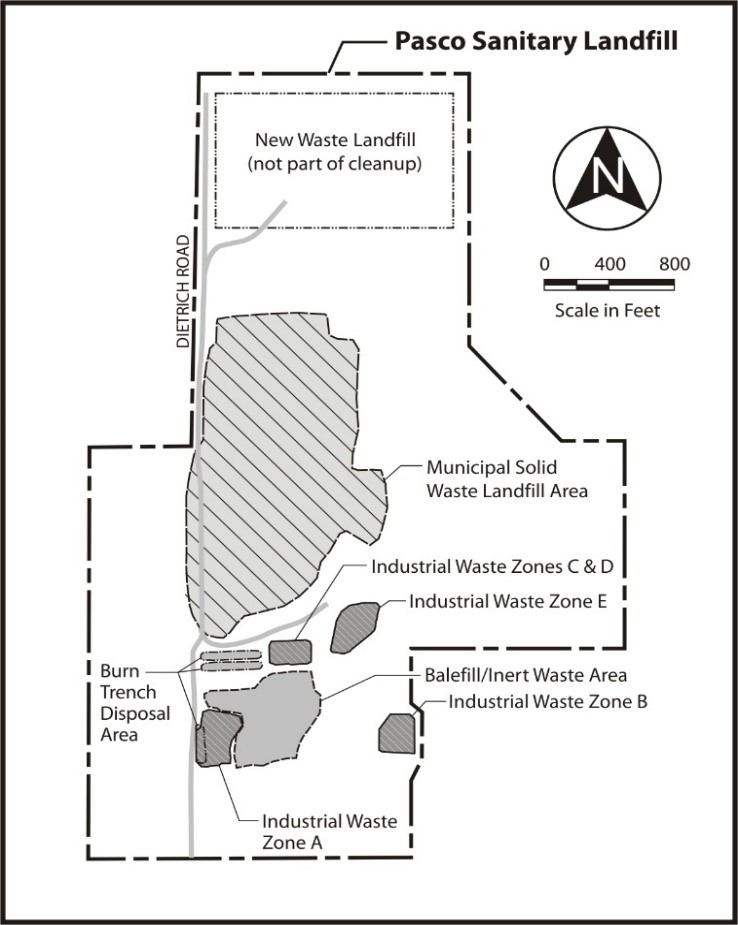After more than 30 years of environmental investigation and cleanup, the Washington Department of Ecology is announcing the removal of more than 35,000 drums of industrial waste from the Pasco Landfill Superfund site. The cleanup is a lasting solution that will end releases of hazardous substances to soil and groundwater from industrial waste that was buried 50 years ago.
“Bringing this decades-long cleanup to a close is a pivotal and encouraging moment for the community,” said Jeremy Schmidt, Ecology’s Pasco Landfill site manager. “Safe removal of the drums permanently eliminates long-term environmental risk to communities in Franklin County and the City of Pasco.”
The waste removal took place in Industrial Waste Zone A of the Pasco Landfill
“The permanent drum waste removal at Zone A was the largest and one of the final, necessary cleanup actions at the site,” said Schmidt. “Removal of the waste will ensure that human health and the environment are protected in perpetuity.”
The drum removal work was done under a temporary structure with an air treatment system. Air quality was monitored during the cleanup action to ensure worker and community safety.
After the waste was excavated, characterized, and separated by waste type, it was transported to disposal facilities in Grand View, Idaho, and Arlington, Oregon. The Zone A waste removal work is being followed by thermal treatment of the remaining contaminated soil located below the former drum repository. The thermal treatment system design is underway, and treatment is anticipated to begin in 2023.
Following the completion of thermal treatment, a final cover system will be placed on Zone A, and the site will continue to be restricted with fences, signs, and limitations on how the property is used.
Groundwater monitoring and the maintenance of landfill covers will continue beyond the completion of active cleanup. The groundwater protection area around part of east Pasco will stay in place until Ecology determines it is no longer necessary.
By hiring local companies to assist in making the work a success, more than 7 million dollars was directly injected into the local economy. Additionally, 42% of materials, supplies, and subcontractors came from less than 50 miles of the site.
“This was truly a monumental effort, and the safe and thorough execution of the drum removal could only have occurred through extensive collaboration between local governments, businesses, contractors, and the entities responsible for cleanup. Ecology is extremely thankful for the effort of all who contributed to this success,” Schmidt concluded.
About the Pasco Landfill
The Pasco Landfill is approximately 1.5 miles northeast of the City of Pasco and covers nearly 200 acres. The landfill opened in 1958. Waste was burned in trenches until 1971, when the site became a sanitary landfill. From 1972 to 1975, the landfill accepted industrial waste.
The Environmental Protection Agency added the site to the National Priorities List in 1990. Ecology took over responsibility in 1991, and the landfill closed in 2001. Ongoing cleanup over the past two decades has reduced groundwater contamination at the landfill property and in off-property areas. Taking the additional steps of removing the buried drums and thermally treating remaining contaminated soil will continue to ensure people and the environment are protected.



